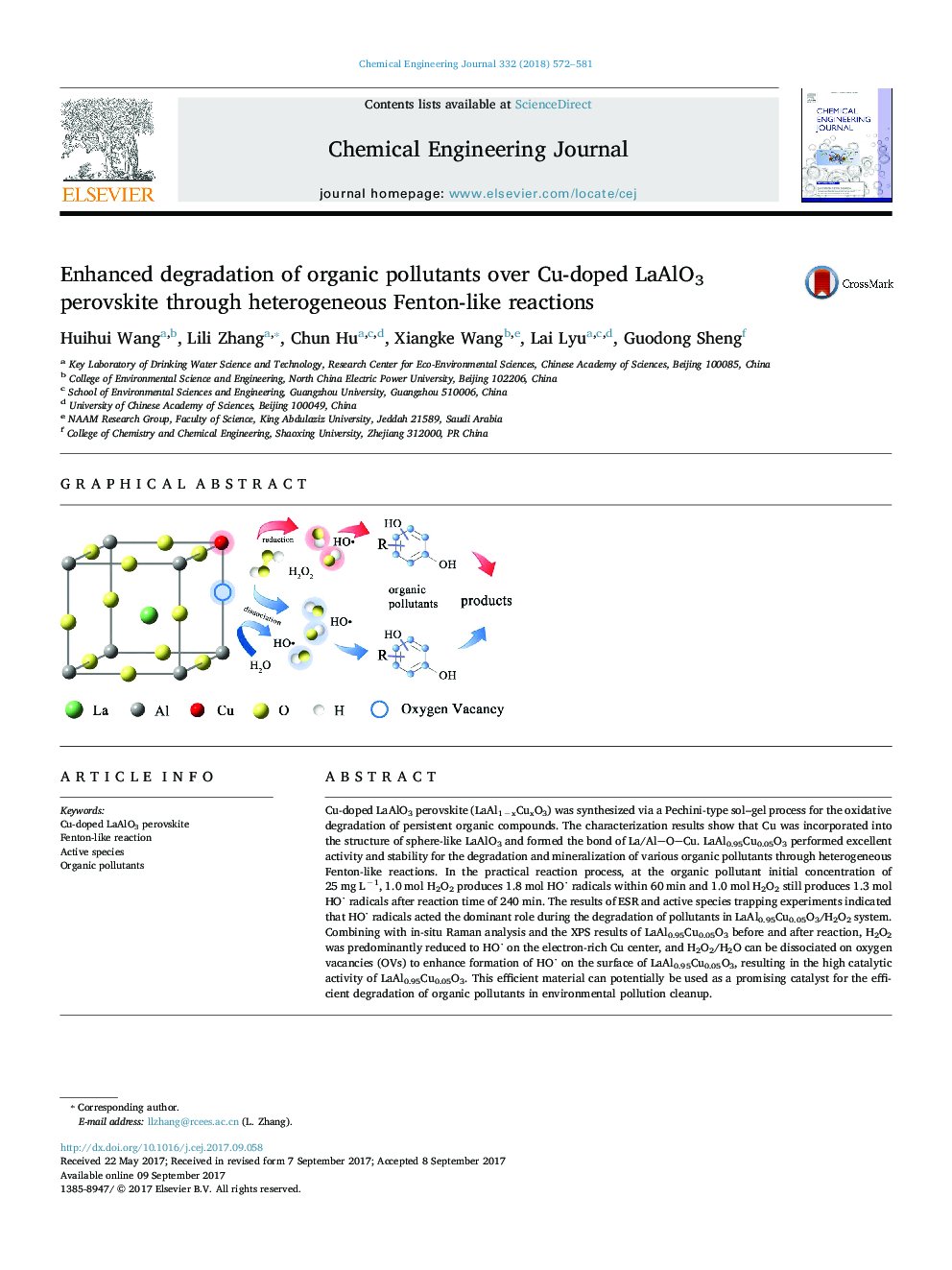| Article ID | Journal | Published Year | Pages | File Type |
|---|---|---|---|---|
| 6464916 | Chemical Engineering Journal | 2018 | 10 Pages |
â¢Cu was incorporated into the sphere-like LaAlO3 structure with La/AlOCu bond.â¢Cu-doped LaAlO3 showed excellent activity and stability for the pollutants removal.â¢The generated amount of HO radicals was nearly twice as that of the reacted H2O2.â¢H2O2 was predominantly reduced to HO on the electron-rich Cu center.â¢The generation of HO radicals was enhanced on oxygen vacancies.
Cu-doped LaAlO3 perovskite (LaAl1âxCuxO3) was synthesized via a Pechini-type sol-gel process for the oxidative degradation of persistent organic compounds. The characterization results show that Cu was incorporated into the structure of sphere-like LaAlO3 and formed the bond of La/AlOCu. LaAl0.95Cu0.05O3 performed excellent activity and stability for the degradation and mineralization of various organic pollutants through heterogeneous Fenton-like reactions. In the practical reaction process, at the organic pollutant initial concentration of 25 mg Lâ1, 1.0 mol H2O2 produces 1.8 mol HO radicals within 60 min and 1.0 mol H2O2 still produces 1.3 mol HO radicals after reaction time of 240 min. The results of ESR and active species trapping experiments indicated that HO radicals acted the dominant role during the degradation of pollutants in LaAl0.95Cu0.05O3/H2O2 system. Combining with in-situ Raman analysis and the XPS results of LaAl0.95Cu0.05O3 before and after reaction, H2O2 was predominantly reduced to HO on the electron-rich Cu center, and H2O2/H2O can be dissociated on oxygen vacancies (OVs) to enhance formation of HO on the surface of LaAl0.95Cu0.05O3, resulting in the high catalytic activity of LaAl0.95Cu0.05O3. This efficient material can potentially be used as a promising catalyst for the efficient degradation of organic pollutants in environmental pollution cleanup.
Graphical abstractDownload high-res image (70KB)Download full-size image
